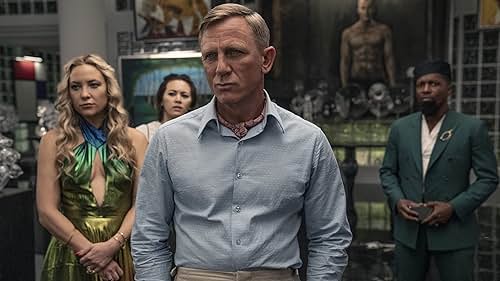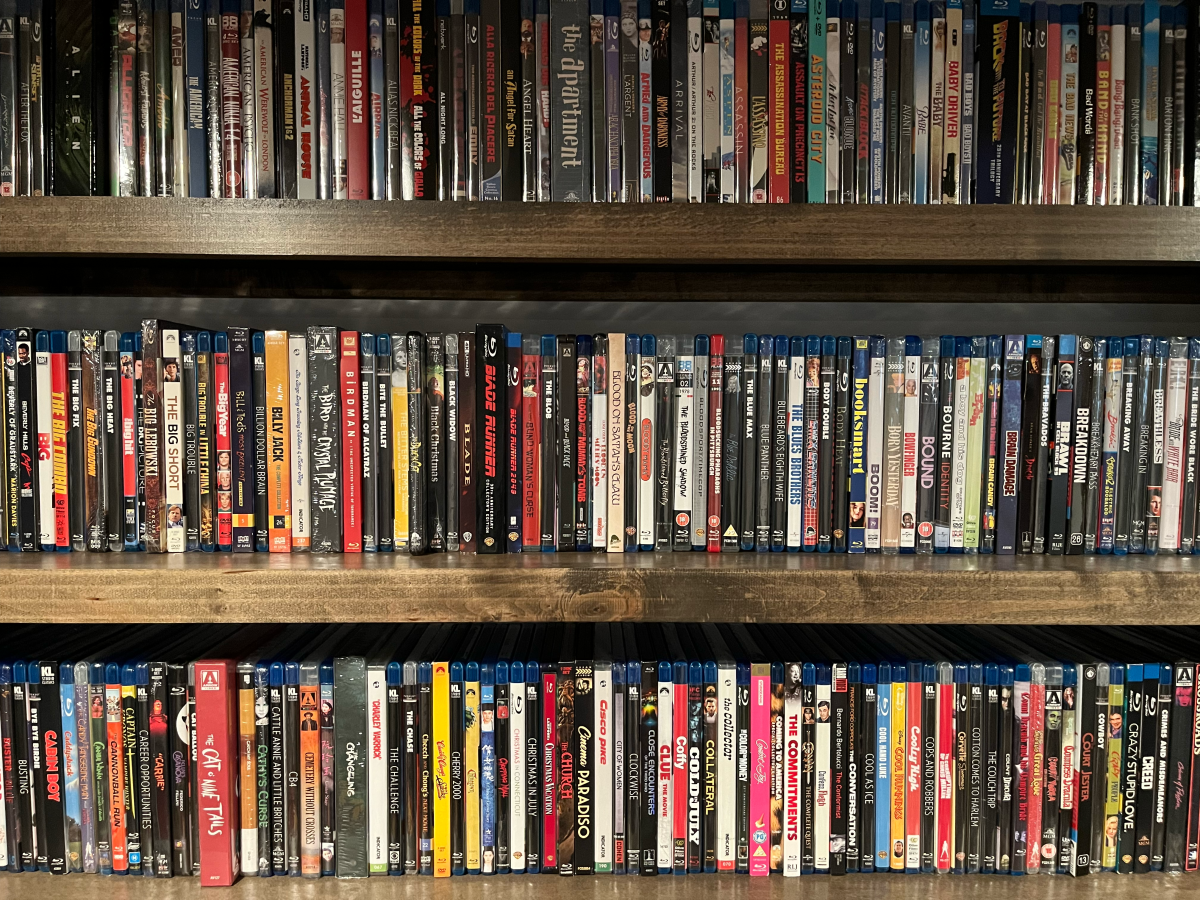Only on DVD Part 4:
Continued from Part 1 / Part 2 / Part 3
In a case unworthy of a master sleuth with an elusive accent or a retired investigative journalist with a penchant for finding trouble, the answer to how studios would approach theatrical and physical media distribution in a post-U.S. vs. Paramount world has become more clear. Paramount showed its hand with the release of Confess, Fletch.
The blockbuster began dominating Hollywood methodology during the late 1980s. Starting around 2004, people began going to the movies less frequently after a long, steady period of increase. According to a 2007 Gallup poll, the average American went to the movies 4.8 times a year, with 30% going to 5 or more movies a year.
By 2021, the average American visited the theater 1.4 times per year with only 9% seeing 5 or more. 61% saw nothing at all. While the precipitous drop off is directly attributable to COVID, streaming and video-on-demand has directly impacted the number of tickets sold since 2008. (Netflix’s streaming service debuted in 2007.) To compensate for sliding attendance, the price of the individual ticket rose, making the old family night at the movies something of a luxury.
The diversion of focus away from cinemas and network television also caused movie marketing to become more difficult. The old reliable media outlets shrank. Attentions became fractured between streaming services and apps and social media. As a population we became elusive, dancing around forced advertisements with skips, scrobbles, and premium subscription services. The only surefire way to sell a movie was to make a movie the public already knew they wanted to see. Studios simply do not believe they can market a movie without a pre-existing audience. They’re not entirely wrong. We don’t go, but the reasons we don’t go aren’t so clear cut.
I’d argue that the studios stopped backing them with conviction before we stopped going. Without casual moviegoers buying movie tickets, studio bottom lines become increasingly reliant on big tentpole movies for which the “sometimes” moviegoers would still line up.

Let’s take a look at the sad case of Confess, Fletch (2022) to see how the mid-budget movie reaches our eyeballs in the pandemic era. (I love a good case study, don’t you?)
Miramax owned the rights to the Fletch books written by Gregory McDonald (except the first). Jon Hamm went to Greg Mottola with a Confess, Fletch script written by Zev Borow. Mottola rewrote the screenplay and took it to Bill Block at Miramax, who was excited to revive the character, at a certain price. That price permitted only 27 days of shooting, a trifle for a mainstream movie.
Mottola looked for production partners, but everyone passed because they didn’t know who would watch a character-driven dialogue-heavy comedy. (They even considered putting Chevy Chase back in the role to attract an investor.) To lock in three extra days of shooting, including one day in Rome, Hamm gave back 60 percent of his salary. Mottola added some more.
Miramax shopped the finished movie – a movie that multiple studios have tried to make over the last 25 years – to every distributor on the block, both traditional studios and streaming services, and nobody wanted it. Ultimately Paramount granted the film an outlet in theaters, perhaps because of their ties to the 1985 original. But their heart wasn’t in it.
Paramount didn’t advertise the film. They didn’t let the public know they could walk into a movie theater and see a new Fletch film. I know die-hard Fletch fans who didn’t know until it was happening until it was too late to buy a ticket.
There’s a cultural divide to consider. A certain generation has been putting champagne on the Underhill’s tab for almost 40 years. Anyone younger than 30 probably thinks Irwin M. Fletcher might be the name of their uncle’s dentist. And yet the movie opened to mostly critical praise and positive word of mouth. Still no advertisements. Jon Hamm appeared in the biggest movie of 2022 (Top Gun: Maverick). Seems like a good thing to mention. Silence. Paramount may have provided the means for exhibition, but they weren’t going to spend another dime to get anyone into the theater to see it.
Confess, Fletch opened in 516 theaters on September 16 (with a simultaneous video-on-demand offering) and disappeared entirely by the end of its second week. I wanted to go back for a second viewing with my wife, but the only local theater playing it dropped it mid-week after 10 days. Without advertising the movie needed the assistance of word-of-mouth. Without time to build word-of-mouth, the studio performed an old-fashioned theatrical dump, normally reserved for movies without hope of success – a curious fate for a moldy, but established franchise backed by a financially proven director (Mottola’s Superbad made $170 million worldwide on a $20 million budget, but Hollywood has a notoriously short memory).
After disappearing from theaters, the film appeared on Showtime on October 22. The belated announcement of a physical media edition felt like an afterthought, detailed and released well after it evaporated from top-of-mind.
So, what did we learn from Irwin M. Fletcher? We learned that the mid-budget movie is as dead as the dodo, and if we forecast the future based on Fletch, the studios are not about to institute any conservation efforts. Paramount undermined its own theatrical release by failing to advertise. The film’s abbreviated release prevented repeat business and word of mouth necessary to drive ticket sales. Despite all of this, the film had generated some buzz by the end of its theatrical run. Did Paramount follow with a wider release on its Paramount Plus platform? Or a shorter release window for home video? No to all of the above.
As a point of comparison, Paramount’s The Lost City (2022) starring Sandra Bullock and Channing Tatum debuted on Paramount Plus 45 days after it opened in theaters. The studio, like most others, has been operating on a 30- to 45-day release window. Confess, Fletch will have waited more than 200 days to appear on Blu-ray and DVD. Long enough to evaporate any buzz generated from its limited theatrical release, ensuring it will be forgotten and considered a failure on all fronts.
Paramount put Confess, Fletch in the gallows to be a public example, to provide supporting evidence for the industry’s assertion that mid-budget movies don’t work, to prevent frivolous future spending on movies that aren’t guaranteed a $200 million box office.
But we’ll never know because, intentionally or not, Paramount created a self-fulfilling prophecy. We won’t support this movie because it won’t make money, and it won’t make money because we won’t support it.
Meanwhile, Bill Block and Miramax said they’d be happy to support more Fletch projects from Greg Mottola and Jon Hamm. Mottola’s written a screenplay based on another McDonald novel, Fletch’s Fortune.
In that 1978 novel, Fletch attends a journalism convention at the bequest of the FBI (else face charges of tax evasion). When one of Fletch’s former employers winds up dead, everyone’s a suspect, including Fletch and he must figure out who did it and why the FBI wanted him there in the first place. There’s a sexy love interest, a cast of eccentrics, and an Agatha Christie-type mystery isolated in a big hotel. It would make a good movie, with low production overhead – and could capitalize on some of that Glass Onion: A Knives Out Mystery genre buzz.
But it won’t probably get made because the basic, understood tenets of movie production and distribution went out the window.
The studios think this is progress because they’re re-taking the control taken from them in 1948 and they’ll shoot themselves in the foot to prove a point and pave the way for the future, a future that looks increasingly like Hollywood’s past.
On my next ‘Only on DVD’ column, I’ll look at Netflix’s release of Rian Johnson’s Glass Onion because Netflix told us exactly what we thought they thought about theatrical distribution.










